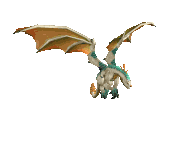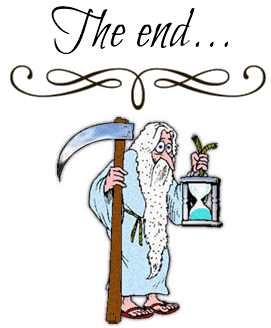Post by QueenFoxy on Jul 1, 2019 18:34:11 GMT -6

Imagine that it is winter in Sweden. New Year is approaching. You are standing outdoors in the middle of the night. It is cold, and the ground is covered with a thick layer of snow. All is silent around you, except from the sound of the chilling winds. You wrap your jacket firmly around you to protect yourself from the cold. What was that, did you just hear a noise from behind you? You turn around, and all of a sudden, you see that something is approaching, moving towards you. You stare in that direction and notice a pair of glowing red eyes and discern the silhouette of a creature in the distance, the size of a large dog, or maybe it is a boar? You panic when you realize that the shape is rushing towards you at full speed. When it comes close it becomes clear that it is indeed a big pig, but one with burning eyes, white skin and a sharp back, formed like a sawblade. It runs straight at you and quickly comes between your legs, with the result that it will cleave you in two halves.
What you have just met is a special type of ghost pig, known from many stories, primarily from southern Sweden. It is a supernatural being that is known by many names, such as Gloson, Gluffsoen, Glosoen, Glopsuggan, Luffesoen, or something similar. The name Gloson (the most common designation) might be derived from the verb att glo (to stare or to shine) and so, sugga (sow). In this short text, we will look more closely at this charming ghost pig. Why pigs? Pigs have been shaped by their long and complicated relationship with humans, both as species and symbolically. Even domesticated pigs used to roam the bush freely in the countryside and could be sometimes be aggressive and dangerous, especially if they had piglets. Another risk was of course wild boar, which were even more terrifying and hazardous. Even today, people avoid wild boars and there are occasional reports of people injured by boars in the wild. In popular culture, aggressive pigs or boars inspire horror motifs in many movies, computer games and books. There is even a slasher movie from 1984, Razorback, where a massive boar leads a back of aggressive and cannibalistic wild boars in Australia, attacking humans, which partly builds on the fear of feral pigs/boars. The designation ‘razorback’ is also common for a certain type of thin-bodied and long-legged feral hog in the southeast of the United States.

What you have just met is a special type of ghost pig, known from many stories, primarily from southern Sweden. It is a supernatural being that is known by many names, such as Gloson, Gluffsoen, Glosoen, Glopsuggan, Luffesoen, or something similar. The name Gloson (the most common designation) might be derived from the verb att glo (to stare or to shine) and so, sugga (sow). In this short text, we will look more closely at this charming ghost pig. Why pigs? Pigs have been shaped by their long and complicated relationship with humans, both as species and symbolically. Even domesticated pigs used to roam the bush freely in the countryside and could be sometimes be aggressive and dangerous, especially if they had piglets. Another risk was of course wild boar, which were even more terrifying and hazardous. Even today, people avoid wild boars and there are occasional reports of people injured by boars in the wild. In popular culture, aggressive pigs or boars inspire horror motifs in many movies, computer games and books. There is even a slasher movie from 1984, Razorback, where a massive boar leads a back of aggressive and cannibalistic wild boars in Australia, attacking humans, which partly builds on the fear of feral pigs/boars. The designation ‘razorback’ is also common for a certain type of thin-bodied and long-legged feral hog in the southeast of the United States.

In the folklore archives in Sweden, there are hundreds of accounts that mention different types of supernatural pigs. Some of the pigs are not really the same as Gloson. Other supernatural beings could also take the shape of a pig, for example a murdered child that comes back to haunt the living (this type is usually called Gravso ‘Grave Sow’), or the first sacrificed being when a new church is built (this type is called Kyrkogrim ‘Church Grim’, and sometimes appears as a pig). But in this text, we will look at Gloson. This supernatural being is usually associated with a ritual known as årsgång, ‘year walk’, a kind of perilous folk divination that could be performed during Christmas or New Year but was sometimes also associated with other seasons, such as Midsummer (for more on the year walk ritual, see Kuusela 2016).
Let us start from the beginning, depending on where you think things start, because that can always by a tricky thing to decide when it comes to folklore. If we leave out theories that argue that Gloson is related to different boars and pigs from Old Norse mythology (i.e. the god Freyr’s boar, Gullinbursti) or to Pre-Christian fertility rituals, then a good place to start is a curious text written by Petter Rudebeck, Antiquities from Småland, published 1697–1700. One chapter deals directly with the year walk ritual, something he thinks of as an old custom; he describes the ritual and how it culminates in a meeting with an old man on horseback. According to Rudebeck, the old man shows himself on the seventh year for someone who repeats the year walk annually. This man is clearly supernatural and is described as sitting on a horse with flames around its head, and carrying a stick with rune carvings in his mouth. I believe that this man, who echoes notions of the Old Norse god Óðinn, fills the same purpose as later accounts of Gloson. In the later descriptions of Gloson, it is this being that carries a rune stick in its mouth and challenges the year walker in a similar manner. As with any sort of folklore, the accounts, the details and the explanations may vary. More to come. ~












